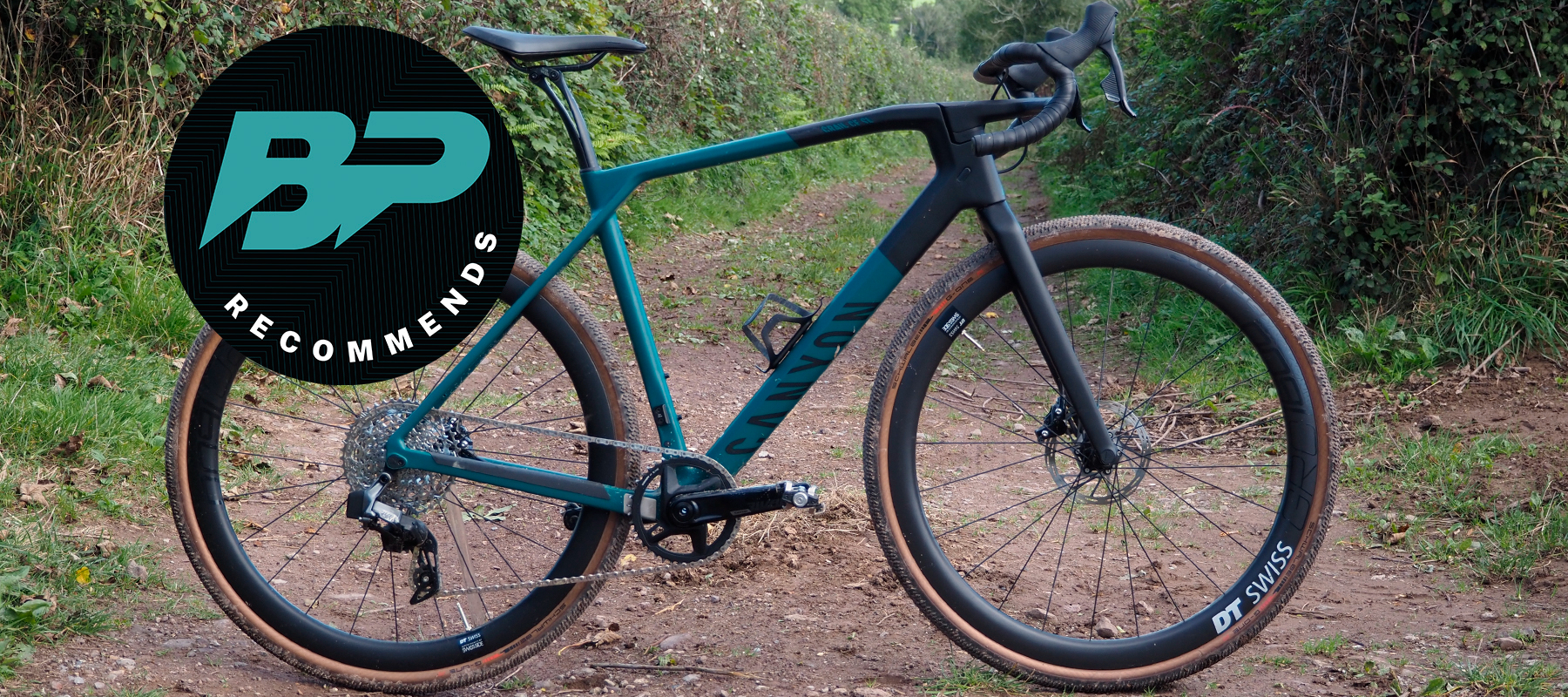Bike Perfect Verdict
Fast and light gravel bike that's well-specced and decent value, though not quite as competitive on price as it once was.
Pros
- +
Rapid ride
- +
Good value
- +
Lightweight
- +
Damped bar and seatpost
- +
Seven frame sizes
Cons
- -
Not the best on tougher trails
Why trust BikePerfect
Canyon has two distinct ideas of what the best gravel bike should look like – their Grizl is designed for tougher trails and the Grail is made with efficient traversing over less gnarled terrain.
The Grail CF SL 7 eTap model we're testing here sits in the middle tier of eight carbon-framed models, while the entire Grail range also includes three aluminum-framed versions and three Grail:ON electric gravel bikes.
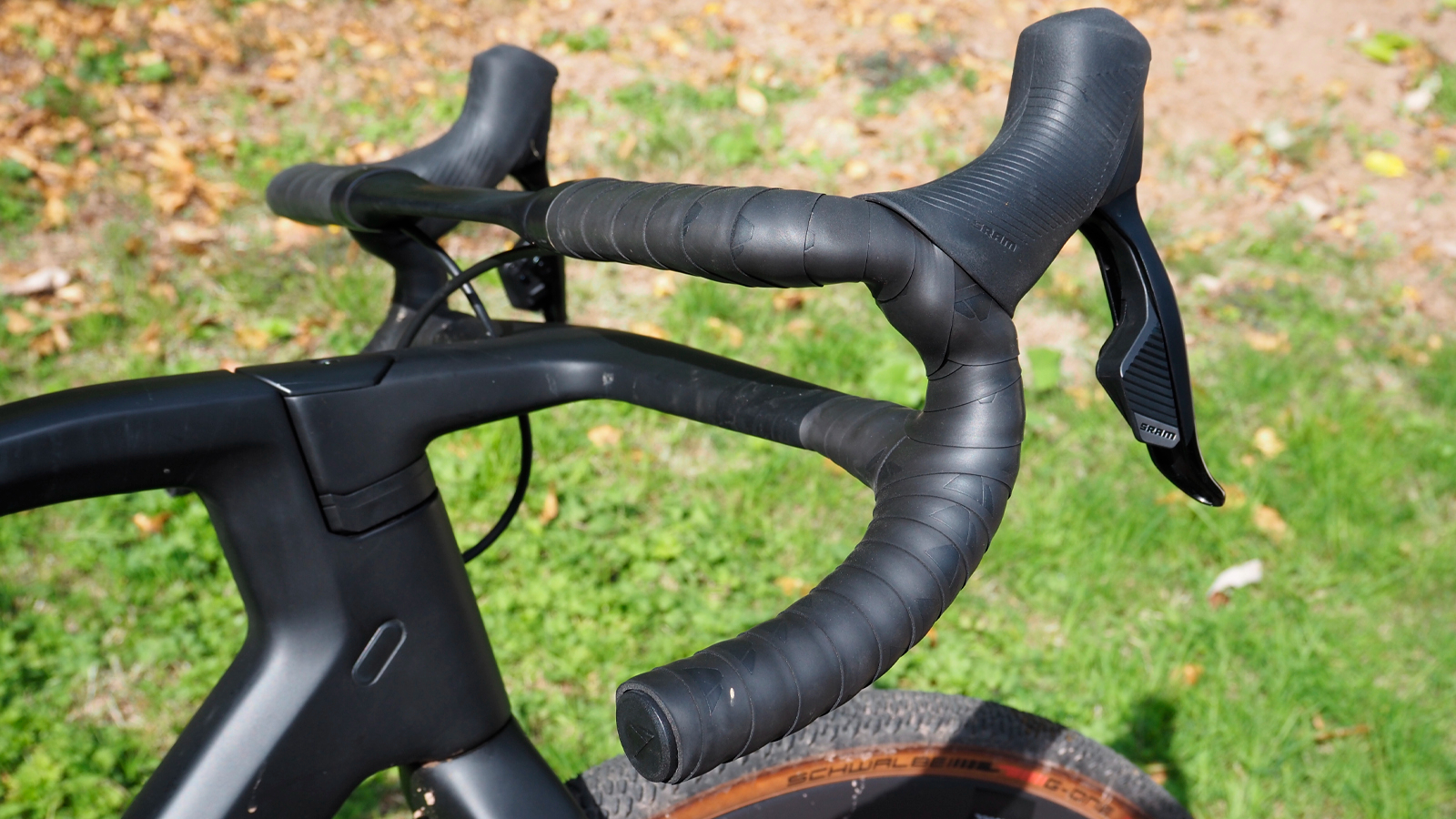
Design and geometry
With their humped top tubes, integrated bar and stem bi-plane cockpit, and split seatposts, the carbon-framed Grails are one of the most distinctive gravel bikes around.
The two-tier cockpit is designed with a flex area between the taped hand positions on the upper level that aims to give a slightly damped feel when holding the tops or brake hoods. While the lower level is made to be as stiff and supportive as possible for descents and sprints.
The Grail comes in seven different sizes, starting at 2XS right through to 2XL. I usually ride a 52 or 54cm frame (depending on the brand), but often size up as I prefer a longer reach. The medium-sized frame felt bang on for me, despite my 176cm height being under the recommended 178-184cm bracket on the size chart.
The integrated cockpit helps give the medium sized Grail CF a roomy reach by anyone's standards of 421mm. This is significantly longer than similarly speed-hungry gravel bikes in the same size, such as the Specialized Diverge, Basso Palta II and Cervelo Aspero 5, while the Grail's stack of 536mm is shorter than any of these comparable bikes. This long reach and short stack puts the rider in a fairly aggressive pedaling position. A fairly conservative 72.5-degree head angle looks to be similarly designed for speed, while the 73.5-degree seat tube angle is bang on for modern standards. The 75mm bottom bracket drop straddles the middle ground between giving plenty of clearance without too much of a negative effect on stability.
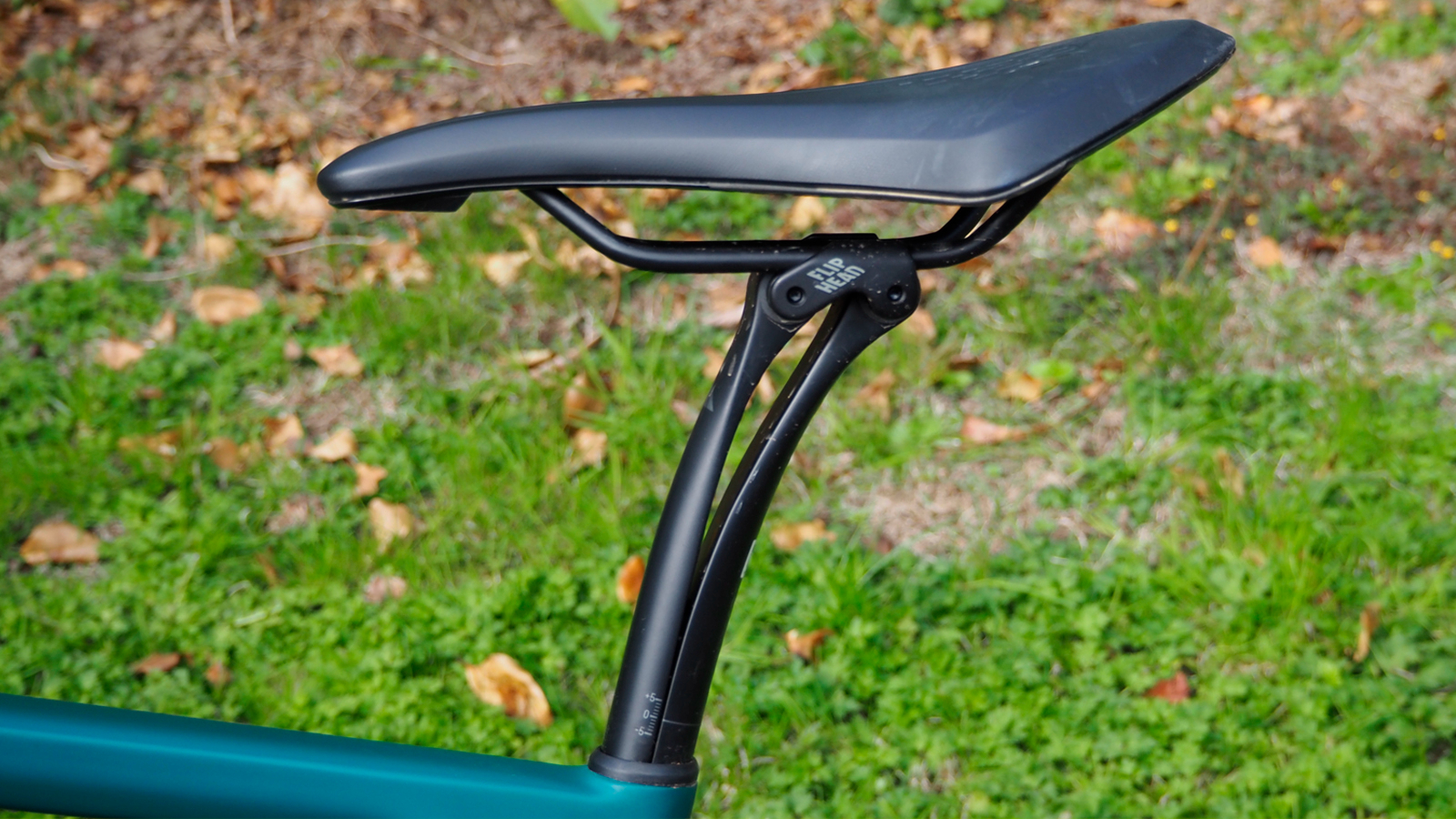
Components and build
This particular Grail CF SL 7 utilizes SRAM's Rival eTap AXS XPLR groupset with wireless shifting, which our tech-editor-at-large, Guy Kesteven, gave 5/5 in a review for our sister site, Cyclingnews. The 1x12 setup comes with a narrow/wide 40-tooth chainring and 10-44t cassette. The SRAM Rival hydraulic brakes come with 160mm rotors front and rear.
To complement the two-tier Canyon CP07 vibration-damping cockpit, the Grail also comes with Canyon's S15 VCLS 2.0 CF suspension seatpost. The carbon shaft is split into two and has a head that 'floats' on the two leaf springs which make up the post section. The head then clamps onto a Fizik Argo Terra X5 saddle.
Everything rolls on DT Swiss GRC 1600 Spline carbon wheels with deep 40mm rims and 24mm internal rim width. The wide rim combines well with the Grail's 40mm Schwalbe G-One R tires so tire roll is not a problem.
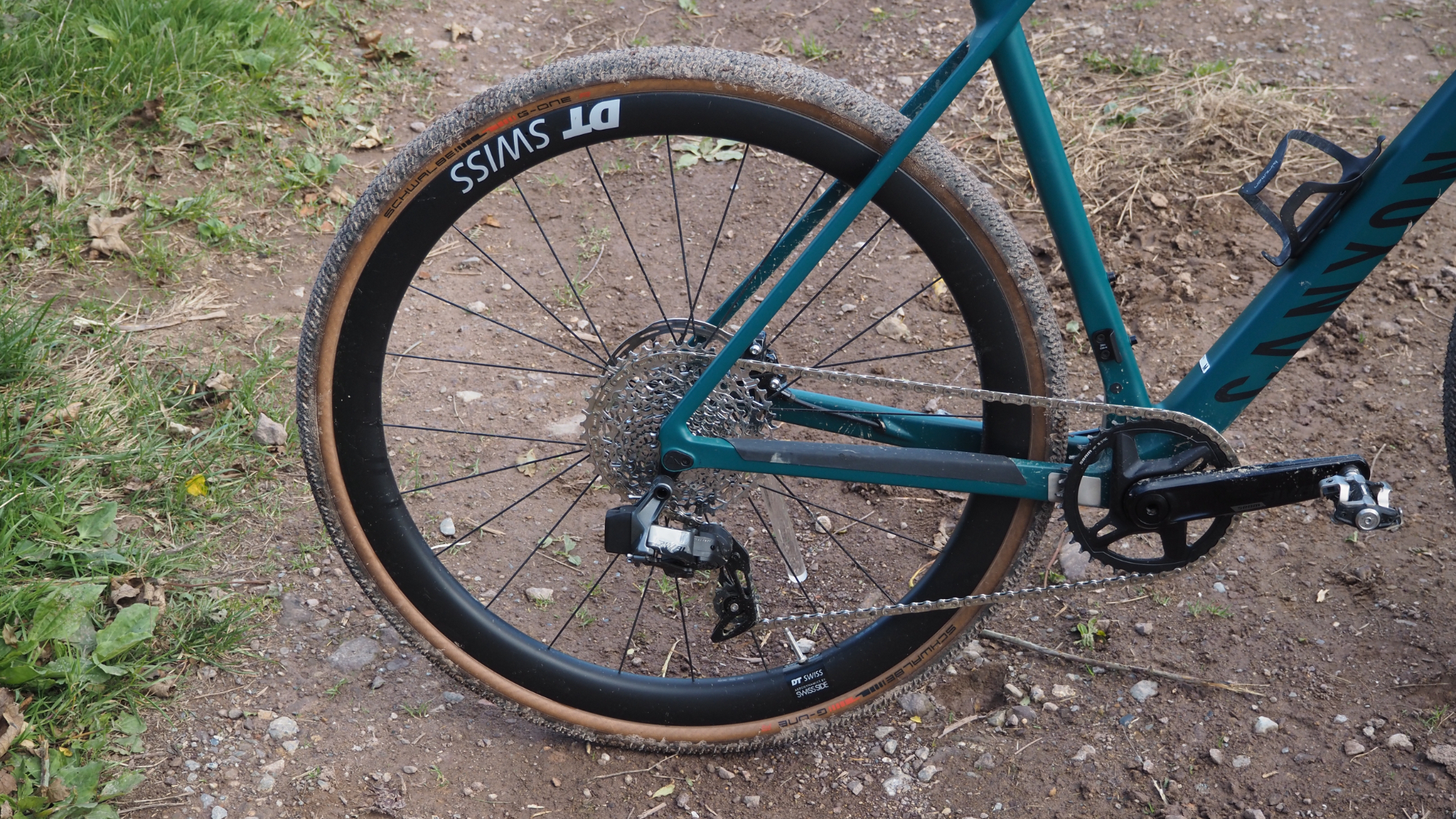
Ride, handling and performance
My first time out on testing the Grail, I was immediately struck by the bike's ability to accelerate quickly and I rapidly reaching warp speeds on baked mud and loose fire road dirt. On checking my ride on Strava once I got home, the speed-hungry nature of the bike was confirmed with a number of PRs on local trails I've ridden hundreds of times before. Subsequent rides in dry conditions were equally rapid and I really appreciated the Grail's light 19.38lb (8.79kg) weight and responsive nature on out of the saddle blasts up short sharp climbs.
Despite being built for speed, the Grail rarely felt uncomfortable thanks to the impressive trail buzz-damping qualities of the suspension seatpost and cockpit. I really enjoyed riding with the Canyon CP07 bar, its twin levels plus the drops and hoods give you a number of different hand positions to experiment with. But the one that I found to be the most useful was getting into the curve of the drops on rapid descents as my hands felt totally locked in place no matter how rough the trails got.
Talking of rough trails, I took the Grail into more XC-like runs which admittedly suit its Canyon stablemate the Grizl. But despite some bone-rattling rides at times, the Grail came through reasonably OK. Though with its lightweight wheels, tires, and lack of overall heft, the bike was very susceptible to pinging off-line when the front wheel hit rocks, roots, and hard-baked lumps. On wetter and more slippery trails, I was surprised by how much traction I got from the Schwalbe G-One R tires and the Grail did a pretty good job of holding lines through corners with plenty of potential slither.
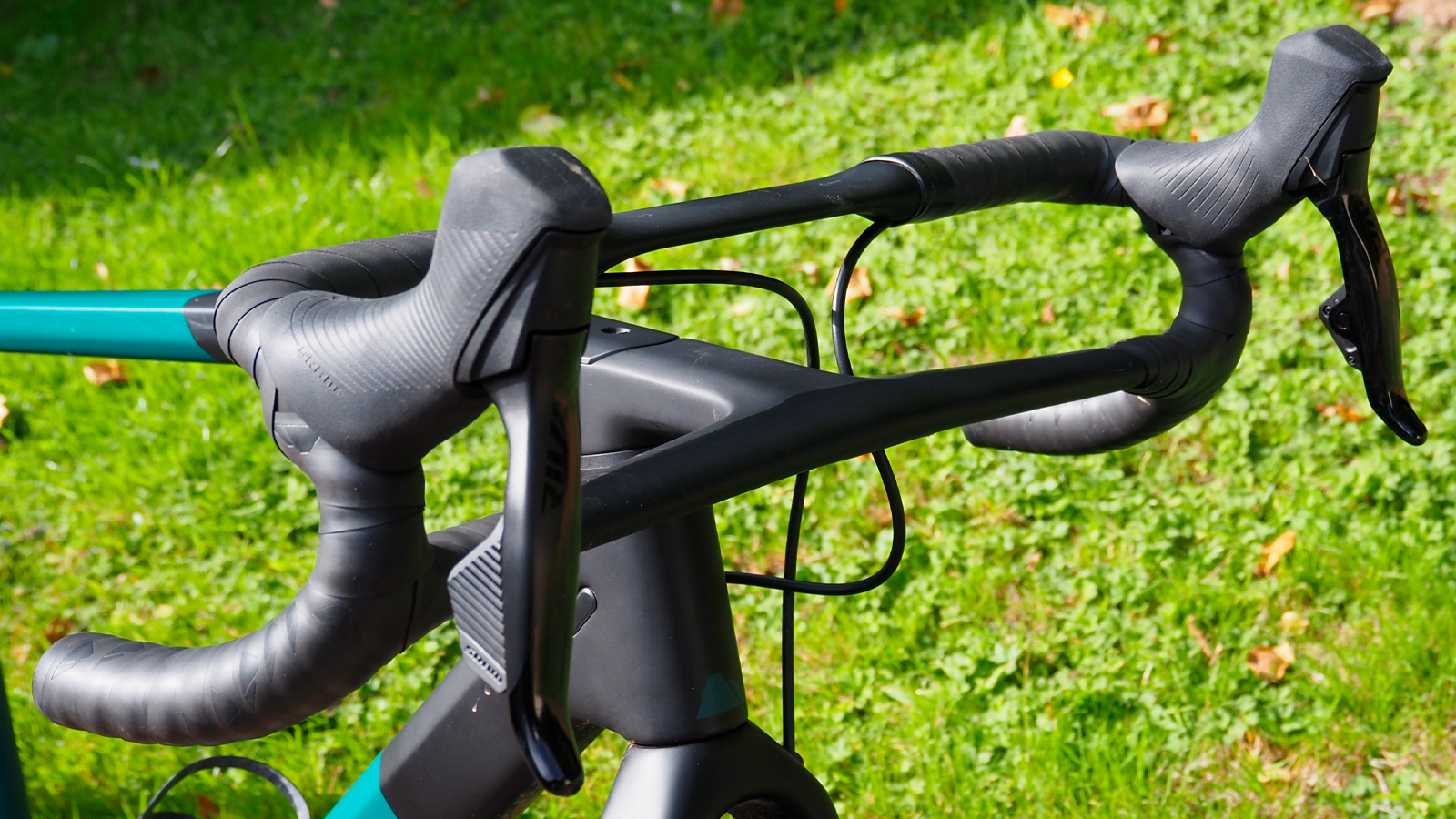
Verdict
When launched last year, the Grail CF SL 7 eTap was excellent value, unfortunately it now costs $450 / £400 / €300 more than it did back then. At $3,649 / £3,749 / €3,899, you still get plenty of bangs for your buck / pound /euro, it's just a shame the bike is not quite as big a bargain as it used to be.
Inflationary concerns aside, if you're looking for an extremely rapid, lightweight and agile gravel steed that's more forgiving than might first appear, then the Canyon Grail CF SL 7 eTap is well worth considering.
Test conditions
- Terrain: Fire road, singletrack, XC trail, road
- Conditions: Bone dry to soggy and everything inbetween
- Temperatures: 50 to 77 F (10 to 25 C)
Tech specs: Canyon Grail CF SL 7 eTap
- Price: $3,649 / £3,749 / €3,899
- Frame: Carbon, Grail CF SL
- Size: Medium (tested)
- Sizes available: 2XS to 2XL
- Weight: 19.38lb / 8.79kg (size medium tested)
- Groupset: SRAM Rival eTap AXS XPLR
- Crankset: SRAM Rival D1 Wide, 40T
- Cassette: SRAM Rival eTap AXS XPLR, 10-44T
- Wheels: DT Swiss GRC 1600 Spline
- Tires: Schwalbe G-One R, 40mm
- Brakes: SRAM Rival eTAP with Paceline rotors
- Bar/stem: Canyon CP07 Gravel Cockpit CF
- Seatpost: Canyon S15 VCLS 2.0 CF
- Saddle: Fizik Argo Terra X5
- Colors: Dark Olive, Sand, Forest
- Available from: Canyon.com

Rich Owen joined the BikePerfect team as editor in 2021. He's worked as a journalist and editor for over 24 years, with 12 years specializing in cycling media. Rich bought his first mountain bike (a rigid Scott Tampico) in 1995 and has been riding MTB for almost 30 years.
Current rides: Merida One-Forty 6000, Banshee Paradox, YT Jeffsy Core 3, Saracen Ariel 30 Pro
Height: 175cm
Weight: 69kg
